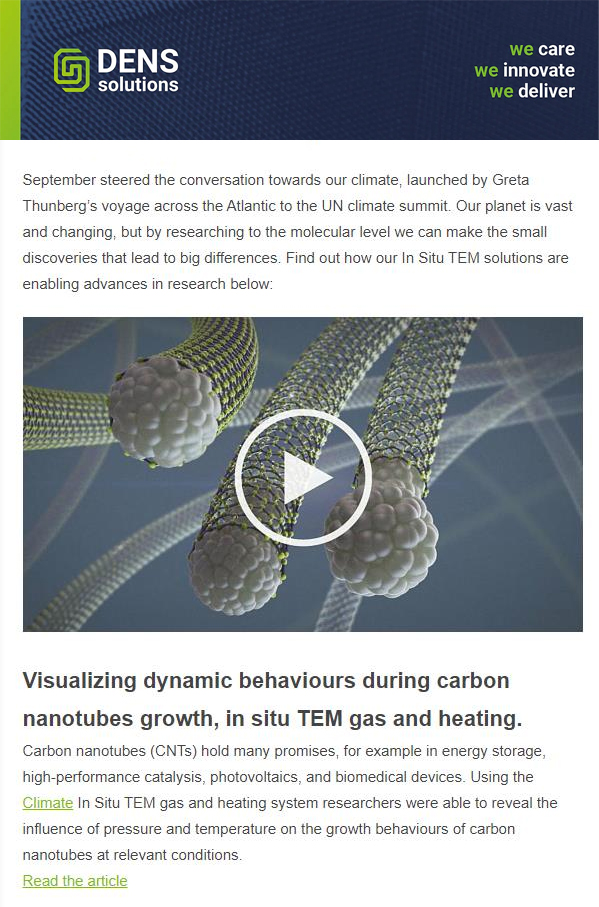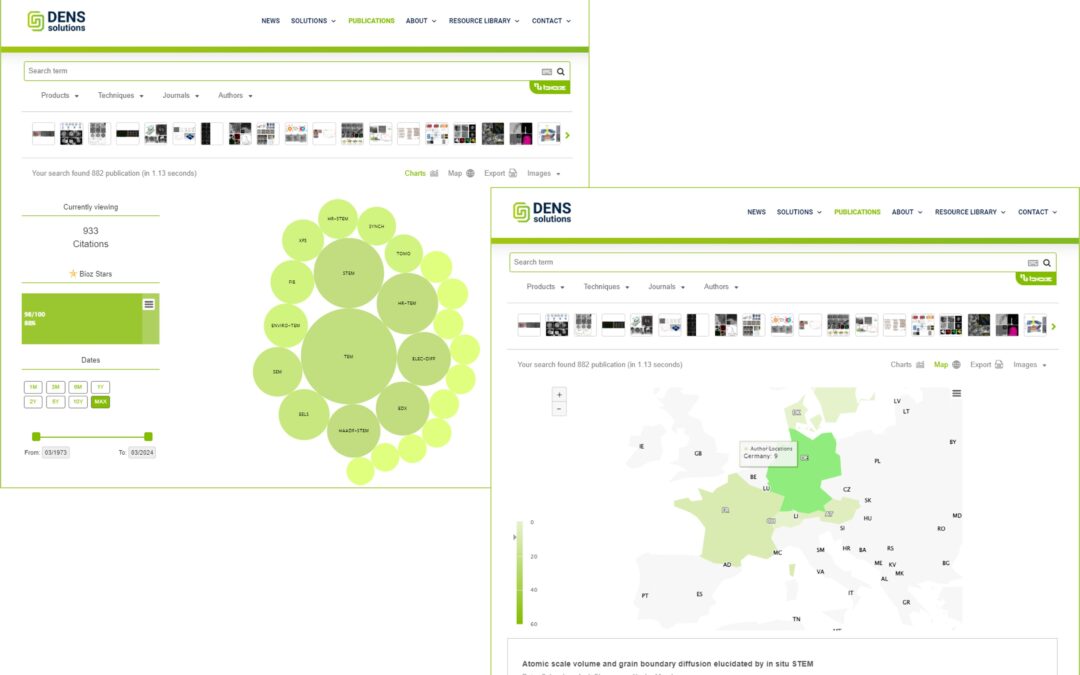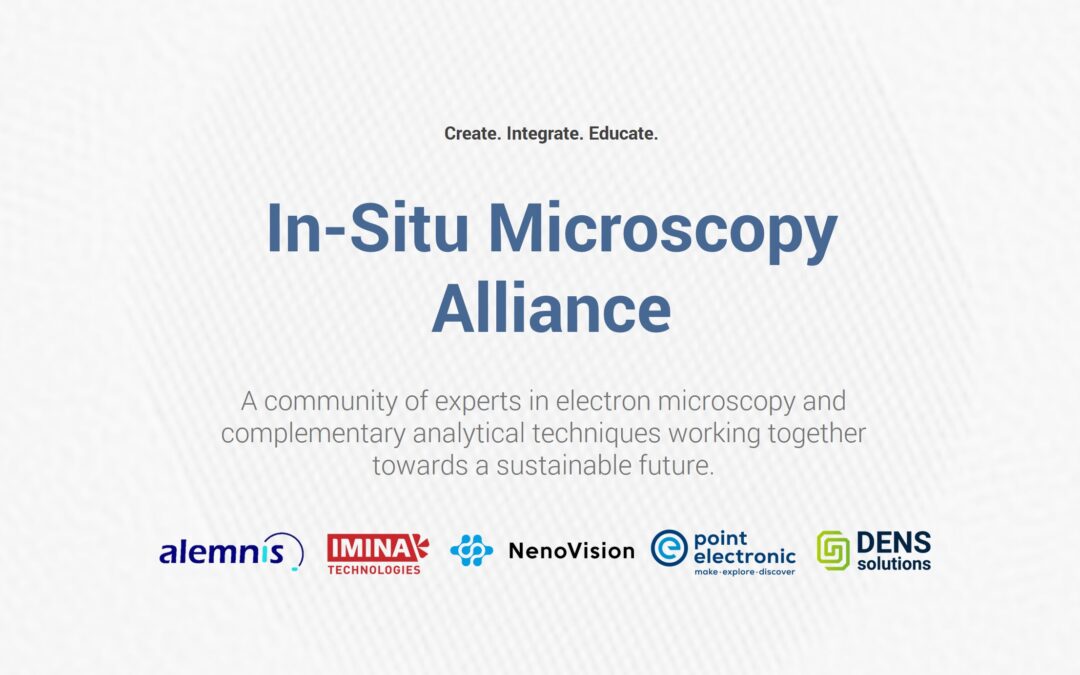
DENSsolutions joins the In-Situ Microscopy Alliance
We are proud to announce that we have become the 5th member of the In-Situ Microscopy Alliance, a collective of innovative scientific companies with the aim of advancing electron microscopy.
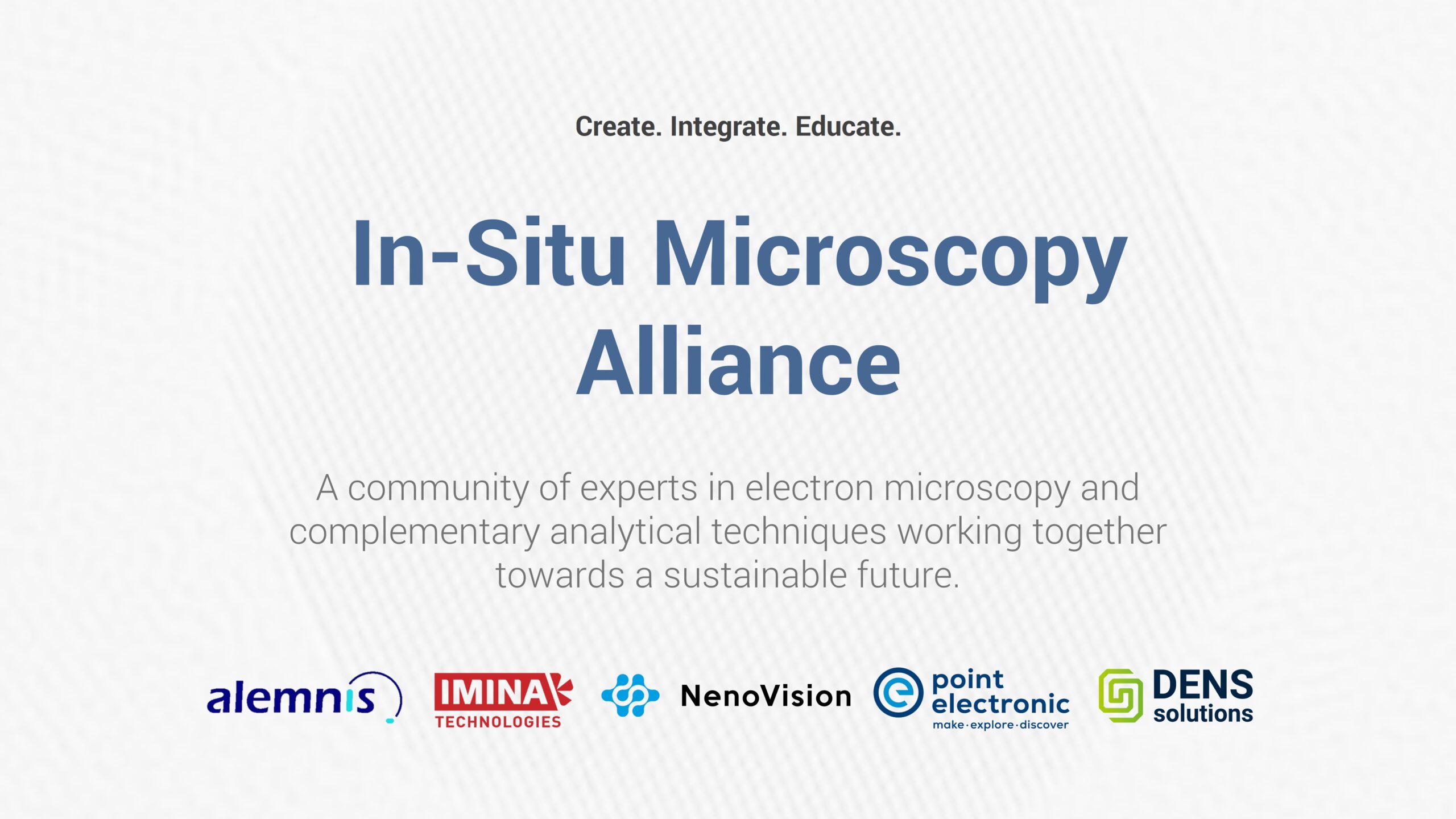
What is the In-Situ Microscopy Alliance?
The In-Situ Microscopy Alliance (IMA) brings together a collective of experts in electron microscopy and related analytical methods, pooling their efforts towards cultivating an innovative and sustainable future. Within this alliance, we engage in collaborative exploration, pushing the boundaries to shape the specs of forthcoming analytical instruments crucial for advancing sustainable technology. To share knowledge effectively, IMA conducts regular online webinars dedicated to specific applications and hosts in-person workshops.
Who are the partners of the In-Situ Microscopy Alliance?
IMA is a collective of 5 different members, including Alemnis, Imina Technologies, NenoVision, point electronic and now DENSsolutions. All members of IMA produce analytical equipment complementary to electron microscopy.
Why was IMA founded?
The creation of the In-situ Microscopy Alliance (IMA) aimed to facilitate the exchange of expertise and advanced technologies in in-situ microscopy and testing. Its primary goals include expediting innovation, encouraging the adoption of novel techniques and promoting the development of diverse applications spanning various fields.
As an alliance, we will:
- Create an ecosystem to enable leading industrial and academic players to explore, develop and promote in-situ characterization techniques, tools, and applications.
- Educate the research and engineering community about the capabilities of in-situ characterization techniques.
- Offer integrations of advanced analytical tools and applications for comprehensive in-situ characterization.
Our core mission is to connect industry and academia to advance in-situ microscopy characterization tools, solutions and services.
Meet IMA’s scientific board
In-situ Microscopy Alliance is supported by a scientific advisory board formed by leading researchers working on novel materials, semiconductors and energy solutions.
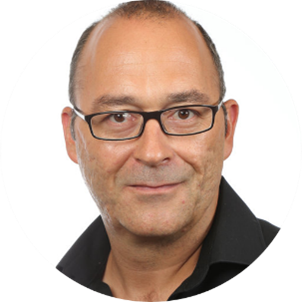
Prof. Dr. Marc-Georg Willinger
Professor | Technical University of Munich
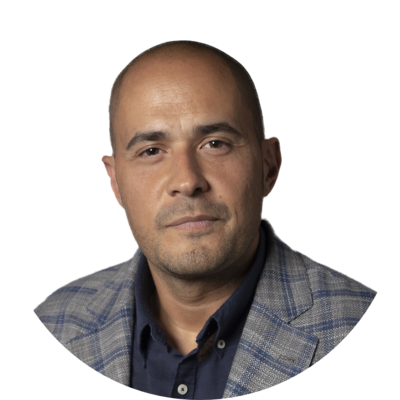
Dr. Umberto Celano
Associate Professor | Arizona State University
Watch one of IMA’s webinars
Learn more about the Alliance, its founding companies and discover the related work of Prof. Dr. Marc-Georg Willinger, a longstanding Climate user and renowned expert in electron microscopy, focusing his research on energy materials.
Stay plugged into our latest news
Follow IMA on LinkedIn to keep up with our latest updates:
